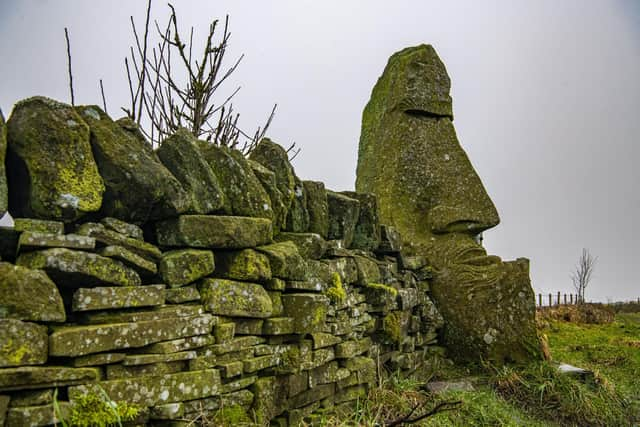Wizard of Whirlaw - The face in the rock above Todmorden
But this rock sculpture actually stands on moorland around West Yorkshire’s Todmorden.
There’s little information about how and when the formation came to be.
Advertisement
Hide AdAdvertisement
Hide AdBut it’s known locally as the Wizard of Whirlaw, sharing its name with that of the book written by native author William Holt.


Billy, as he was known, was born in 1897 and worked in the mills as a weaver as a boy.
Throughout his life, he taught himself many languages and travelled widely with a fascination for new experiences and cultures.
Locally, Holt set up a holiday camp in Hardcastle Crags and briefly served as a Todmorden councillor.
Advertisement
Hide AdAdvertisement
Hide AdAs well as writing numerous books, and working at one point as a freelance correspondent for the BBC, Holt also started Books On Wheels, a mobile library service which used vehicles consisting of half motorcycle and half van, made in Halifax.
A colourful man, who spent nine months in jail after leading a protest, later in life Holt became known for writing about his travels across Europe with a horse named Trigger. He died in 1977.
A blue plaque commemorating him on his former home describes him as a weaver, author, artist, publisher, political activist, broadcaster, inventor, world traveller and humanist.
Holt’s book The Wizard of Whirlaw was published in 1959.
This rather large carved head of the same name stands above his hometown and has become a popular sight among walkers in the area.
Advertisement
Hide AdAdvertisement
Hide AdIt is reminiscent of the monolithic human figures carved by the Rapa Nui people on Easter Island, more than 8,000 miles away.
There are around 1,000 of the sculptures, known as Moai statues, on the island, and they were built to honour ancestors or past rulers after their death.
Other Moai removed from the island can also be seen in museums across the world.
Support The Yorkshire Post and become a subscriber today. Your subscription will help us to continue to bring quality news to the people of Yorkshire. In return, you'll see fewer ads on site, get free access to our app and receive exclusive members-only offers. Click here to subscribe.
